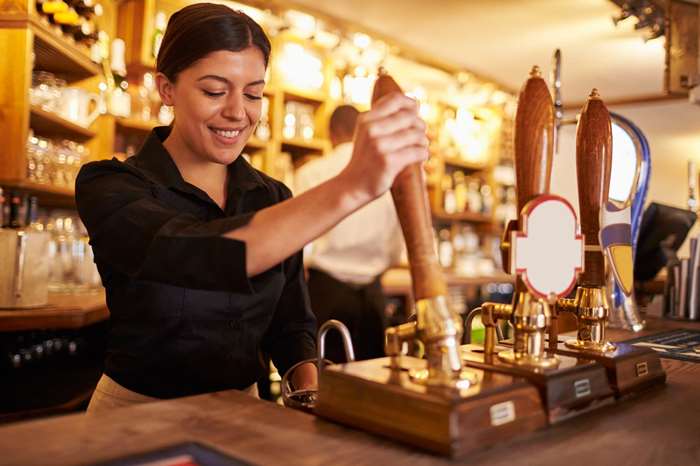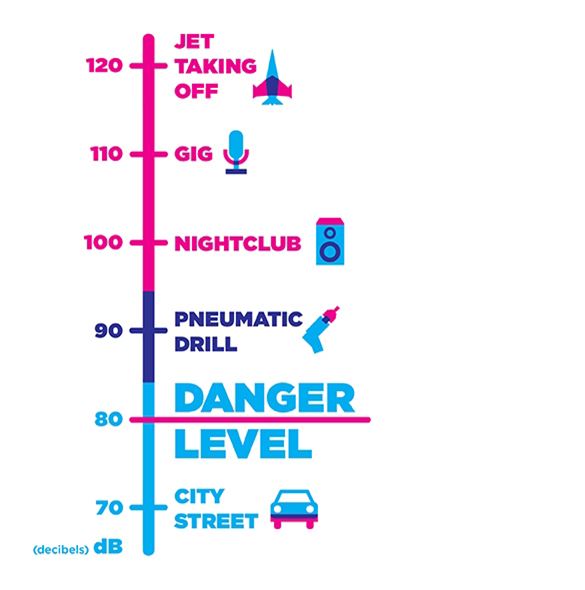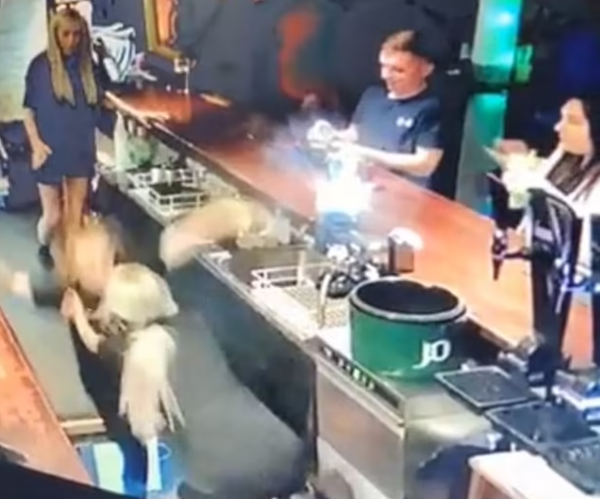Pubs, clubs and bars

Woman pulling a pint of beer at a bar
The industry operates in a highly regulated environment and through the licensing objectives must ensure the responsible operation of its premises at all times for customers, staff and the local community. A key priority of the industry is to ensure that both customers and staff feel secure, comfortable and safe in all licensed premises. These pages focus primarily on accident prevention for staff and customers.
Ten safety essentials
Take a look at our ten safety essentials pages. These pages will guide you through the essentials for managing health and safety in your business. The areas below contain specialist advice for you to consider when writing your risk assessments and implementing safe systems of work & procedures to keep staff and visitors safe.
Risk assessment
When undertaking your risk assessment for your business you may wish to look at the example risk assessments below:
Example risk assessment for a Pub (PDF, 264KB)
Example risk assessment for a Nightclub (PDF, 66KB)
You may also wish to consider the other topics which may be relevant to parts of your premises:
- Food preparation, cooking and service
- Office based business
Slips, trips and falls
What you must do
You must ensure that your employees and anyone else who could be affected by your work (such as visitors and members of the public), are kept safe from harm. You must assess the risk from slips and trips and take reasonable precautions.
What you should know
Slips and trips remain the single most common cause of major injury in UK workplaces. Every year there are many accidents in the catering and hospitality industry caused by slips and trips. The occupations most affected are kitchen assistants, chefs and waiting staff. Preventing Slips and Trips in Food Service is a comprehensive guide to help you manage your risks.
You should also visit our Slips, trips and falls page.
Musculoskeletal disorders in the catering and hospitality
What you must do
The Manual Handling Operations Regulations 1992 (MHOR) require employers to:
- avoid the need for hazardous manual handling, so far as is reasonably practicable;
- assess the risk of injury from any hazardous manual handling that can't be avoided; and
- reduce the risk of injury from hazardous manual handling, so far as is reasonably practicable.
Your risk assessment should cover all standard operations, including cleaning and maintenance activities. It should reflect how the work is actually done.
The main areas you should focus on are the task, load, working environment and individual capability.
What you should know
Back pain and other aches arising from manual handling injuries are the most common type of occupational ill health in the UK. In kitchens there are many tasks that, without proper controls, can cause back pain or upper limb injuries that can affect hands, wrists, shoulders and neck.
Lifting and carrying heavy items or pushing and pulling can be a major source of back pain, while forceful or repetitive activities and poor posture can be linked to upper limb injuries.
Catering Information Sheet 24: Preventing manual handling injuries to catering staff, provides information on significant risk areas to look for and offers practical examples of solutions that you can apply in your workplace. It lists other HSE guidance available on manual handling and preventing back pain. It is aimed mainly at employers although it will also be useful to employees and safety representatives.
The key messages are:
- you can easily take action to prevent or minimise this type of injury;
- the preventive measures are cost effective;
- involving staff is key to success;
- training staff in proper lifting techniques, use of handling aids and raising awareness of the risks will reduce the likelihood of injuries in the future;
- early detection and reporting of aches and pains is crucial.
Find out more
- MSD microsite
- Manual handling assessment (MAC) TOOL
This helps user identify high risk workplace manual handling activities - Are you making the best use of lifting and handling aids
- Manual handling at work: A brief guide
- Manual handling assessment charts
- Upper Limb Disorders in the Workplace
- Aching Arms (or RSI) in small businesses
Electrical safety
Electricity can kill or severely injure people and cause damage to property. However, employers can take simple precautions when working with or near electricity and electrical equipment to significantly reduce the risk of injury to you, your workers and others around you. There have been a number of high profile deaths in hospitality premises in recent years, therefore you must:
- Ensure the electrical installation is inspected and maintained in good repair; and
- Ensure that any portable appliances are inspected and tested regularly (PAT Test);
- Keep a records of inspections and tests.
See our Electrical safety page for comprehensive guidance.
British Beer & Pub Association:
Managing asbestos
The duty to manage asbestos is directed at those who manage non-domestic premises: the people with responsibility for protecting others who work in such premises, or use them in other ways, from the risks to ill health that exposure to asbestos causes.
Duty holders must:
- take reasonable steps to find out if there are materials containing asbestos in non-domestic premises, and if so, its amount, where it is and what condition it is in
- presume materials contain asbestos unless there is strong evidence that they do not
- make, and keep up-to-date, a record of the location and condition of the asbestos- containing materials - or materials which are presumed to contain asbestos
- assess the risk of anyone being exposed to fibres from the materials identified
- prepare a plan that sets out in detail how the risks from these materials will be managed
- take the necessary steps to put the plan into action
- periodically review and monitor the plan and the arrangements to act on it so that the plan remains relevant and up-to-date
- provide information on the location and condition of the materials to anyone who is liable to work on or disturb them
For further information see:
HSE - Managing Asbestos
HSE - Managing asbestos in buildings, a short guide
HSE - Managing my asbestos, a step by step guide
British Beer & Pub Association - duty to manage asbestos in Licensed premises
Pressure systems
A pressure system is one that contains or is likely to contain a relevant fluid over 0.5 bar.
Many types of pressure equipment can be hazardous – examples are:
- boilers and steam heating systems
- pressurised process plant and piping
- compressed air systems (fixed and portable)
- pressure cookers, autoclaves and retorts
- heat exchangers and refrigeration plant
- valves, steam traps and filters
- pipework and hoses
- pressure gauges and level indicators
- steam coffee machine
When things go wrong, these types of equipment can cause serious injuries and even fatalities. However, assessing the risks and putting proper precautions in place will minimise the chances of any accidents occurring.
Owner of pressure systems have a statutory duty to have them inspected, frequency of inspection depends upon the equipment. Hot water boilers (coffee machines) need to be inspected every 14 months, Steam pressure vessels need to be inspected every 26 months. You can find the frequency of inspection with the manufacturers instructions.
Beverage Gas
Many catering establishments use beverage gas systems. It is important that these systems are maintained and used correctly. Ensure that you are following the guidance below:
GN30 The safe use of gases in the beverage dispense industry. Revision 1: 2017 (PDF, 980KB)
Making the right choice in beverage gas (PDF, 547KB)
Gas equipment inspection replacement date marking (PDF, 2.4MB)
Noise
Loud noise at work can damage your hearing. This usually happens gradually and it may only be when the damage caused by noise combines with hearing loss due to ageing that people realise how impaired their hearing has become.
Noise at work: A brief guide to controlling the risks

Employers are required to:
- Assess the risks to your employees from noise at work;
- Take action to reduce the noise exposure that produces those risks;
- Provide your employees with hearing protection if you cannot reduce the noise exposure enough by using other methods;
- Make sure the legal limits on noise exposure are not exceeded;
- Provide your employees with information, instruction and training;
- Carry out health surveillance where there is a risk to health.
The Regulations do not apply to members of the public exposed to noise from their non-work activities, or making an informed choice to go to noisy places.
Controlling Noise at Work: Advice on the regulations
Noise: Don't loose your hearing
Sound Advice
Containing practical guidance on the control of noise in places like concert halls, theatres, amplified live music venues, pubs/clubs and studios, this book was put together by representatives across the spectrum of the British music and entertainment sectors, Environmental Health Officers and the Health and Safety Executive. Offering simple, sensible and solution-based advice in order to meet regulations, the emphasis is on preventing irreversible hearing damage not enjoyment. In two sections, firstly a guide on what you need to know and advice for specific sections of the industry.
Sound Advice Control of Noise at Work in the Music and Entertainment Industry
For further information see the HSE website & quiet nightclub case study and Musicians Union
Violence
You have a legal duty to protect your employee from violence, whilst at work. This duty includes all forms of work-related violence, which HSE defines as: ‘Any incident in which a person is abused, threatened or assaulted in circumstances relating to their work’. This means :
- physical violence – including kicking, spitting, hitting or pushing , as well as more extreme violence with weapons;
- verbal abuse – including shouting, swearing or insults, racial or sexual abuse;
- threats and intimidation.
For more information see HSE Violence at work
Premises should join a relevant pubwatch scheme. such as Lancaster Pubwatch or Morecambe Pubwatch
British Beer & Pub Association - Managing safety in pubs
Gas safety
Many premises use gas for cooking and heating. It is essential that all business know and understand their duties in relation to gas safety. In order to comply with the law, as a business you should;
- Have your gas installation (the building including pipe work) inspected by a gas safe engineer, and; (This is usually an annual inspection)
- Have your gas appliances (cookers, grills, heaters, boilers etc..) inspected by a gas safe engineer; (This is usually an annual inspection)
- Keep all records of inspection for at least two years, to demonstrate that you are having the checks undertaken
See our Gas safety page for comprehensive guidance.
Top tips for using gas heaters in gazebo's, marquees & other shelters.
- Gas appliances such as heaters or lamps must be suitable for ‘indoor use’. Gas equipment such as patio heaters are frequently only rated for ‘outdoor use’, due to the dangerously high mounts of Carbon Monoxide they emit. Consult the instruction manual for your gas appliance prior to operation. If you cannot find the instruction manual consult with a competent Gas Safe Engineer.
- Ensure all staff are trained in the changing and operation of gas cylinders.
- Spare gas cylinders (full and empty) must be stored outside in a locked cage. The cage must not be located near to drain or cellar access.
- Persons, especially children, must be protected from burns brought about from being too close to or touching hot patio heaters
Cellar hatches and doors
Cellar hatches
Cellar hatches are found in many premises, especially old or traditional pub premises. Cellar hatches can pose a serious danger and it’s very important that proper precautions are taken to prevent persons from falling down the hatch.

You must ensure that a risk assessment is undertaken for the use of any cellar hatches/trap doors. Consider:
- Brining sufficient stock up from the cellar to last a days business, before you open;
- Using an alternative entrance, for example a door leading down the stairs, even if this means having to travel to the other side of the premises;
- Closing the room or premises if you need to open the hatch and the hatch is in a public area (you wouldn't want a curious child or 'merry' customer to fall in);
- When open, sufficient guarding and signs must be in use; consider fitting in built guarding around teh door, or 'pop-up' guarding when the hatch is in use;
- Ensuring that the steps/ladders are well lit;
- Handrails leading to cellar are kept in a good condition.
- £40k fine for pub cellar injury
- Pub fined £60k after worker falls into cellar
- Shocking moment barmaid plummets down an open cellar hatch fracturing two ribs and injuring her knee - Daily Mail
Cellar doors
Cellar doors must be marked as 'staff only' and be locked when not in use. We recommend fitting key pad locks and self-closing mechanisms. This will prevent persons accidentally opening the door when looking for facilities such as toilets and falling down the steps, which can be steep and poorly lit.
Licensing Act 2003 - Public safety
Licence holders have a responsibility to ensure the safety of those using their premises, as a part of their duties under the 2003 Act. This concerns the safety of people using the relevant premises rather than public health which is addressed in other legislation. Physical safety includes the prevention of accidents and injuries and other immediate harms that can result from alcohol consumption such as unconsciousness or alcohol poisoning.
As a premises licence holder, if you do not manage safety your licence may be subject to a review and strict conditions maybe imposed or in extreme cases your licence may be revoked.
Fire safety
You will also need to ensure that you have suitable fire precautions in place;
- A guide to making your small non-domestic premises safe from fire
- Small and medium places of assembly
- Large places of assembly
Fire safety precautions are enforced by Lancashire Fire and Rescue and not the Council.
Last updated: 16 August 2024
